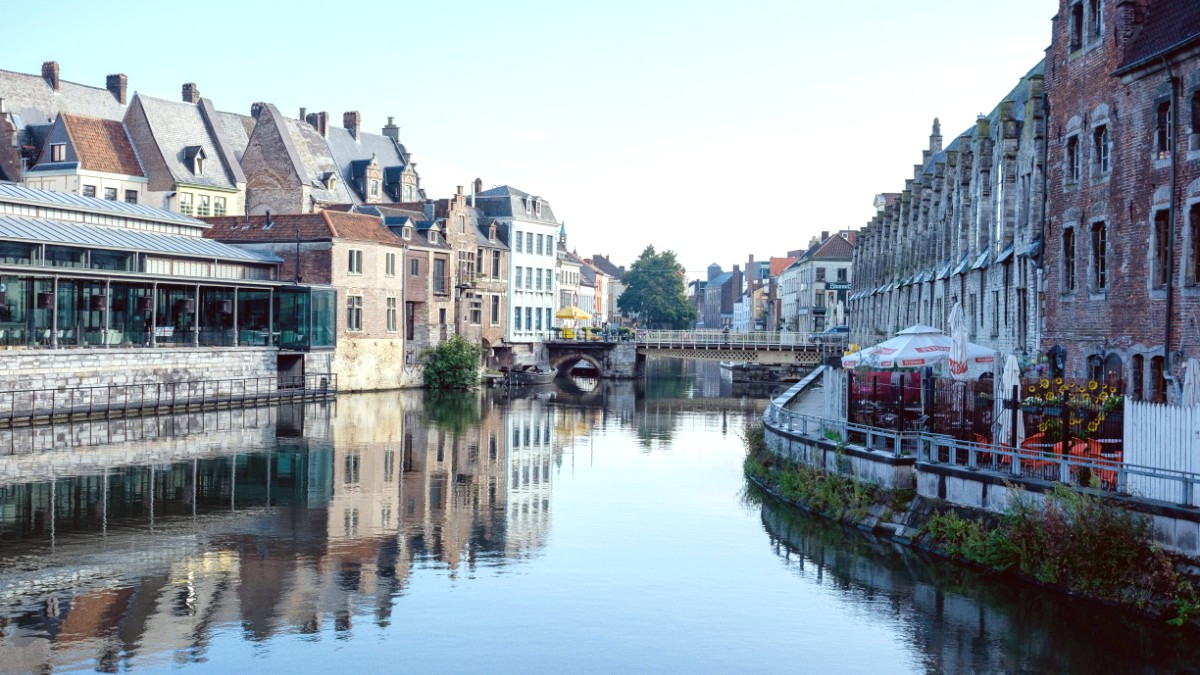
Flanders, Belgium
Picture a city where medieval towers pierce the sky, reflecting in tranquil canals. Cobblestone streets wind past ancient guild houses, their ornate facades whispering stories of merchants and artisans from centuries past. Yet, alongside this rich history, a youthful energy pulses, fueled by a large student population and a thriving arts scene. This is Ghent, Belgium’s unassuming treasure, a place that welcomes you with genuine warmth and invites you to explore its layers. It has a quieter, more authentic feel than some well-known European cities, yet delivers equally impressive sights and experiences. Visitors find a dynamic destination, rich in culture and ready for discovery.
Ghent does not simply preserve its past; it lives within it, making the old seamlessly part of the new. The city feels lived-in, not just observed. Its character draws you in, from the aroma of freshly baked waffles to the chime of ancient carillons.
Anticipate an adventure that combines historical discovery with modern comfort, all within a welcoming atmosphere. Ghent promises a journey of fascination, disclosing its unique identity with every step you take.
Ghent sits in the Flemish region of Belgium, a country in Western Europe. It serves as the capital of the East Flanders province. The city finds its location at the confluence of the Leie and Scheldt rivers, a geographical feature that historically shaped its development. These rivers formed natural highways for trade.
Ghent is approximately 55 kilometers (34 miles) northwest of Brussels, Belgium’s capital, and about 40 kilometers (25 miles) west of Bruges. Antwerp lies roughly 55 kilometers (34 miles) northeast. This central location in Flanders makes Ghent a practical base for exploring other Belgian cities. Its river connections linked it to the North Sea, though the city itself is inland. The intricate network of canals and waterways within the city center provides a prominent feature.
Flemish Region, East Flanders Province
Confluence of the Leie and Scheldt
Largely flat, ideal for walking and cycling
Typically just above sea level
Well-connected by road and rail
The surrounding landscape of East Flanders consists mainly of fertile agricultural land, dotted with small villages and green spaces. While not a region of dramatic natural beauty with towering mountains or vast coastlines, the gentle, rolling countryside and polder landscapes offer peaceful cycling routes and pleasant walks. Ghent is accessible by both road and rail, thanks to its position within Belgium's well-developed transportation network. Its strategic location historically made it a center for trade and industry, a legacy still seen in its well-preserved port areas and industrial architecture that now often houses creative businesses.
The intricate network of canals and waterways within the city center forms a prominent feature, adding to its visual appeal and historical character.
The city's internal geography reflects its past. The medieval core centers around the confluence of the rivers, where the oldest buildings and most important landmarks stand close together. This compact center is highly walkable, inviting visitors to explore its main sights on foot. Newer districts and residential areas stretch outwards, with parks and recreational zones throughout.
The Leie and Scheldt rivers converge in Ghent, shaping its layout and offering scenic boat tours.
Ghent has a history as rich and complex as its elaborate architecture. During the Middle Ages, it stood as one of Europe's largest and wealthiest cities, second only to Paris north of the Alps. Its power came from its thriving textile industry, especially wool cloth production. Merchants and weavers generated immense wealth, leading to fierce rivalries between powerful guilds and the ruling counts of Flanders. This period saw the construction of many iconic landmarks, including the Gravensteen Castle, the Belfry, and the grand guild houses along the Graslei, all symbols of the city's independence and prosperity.
The 14th and 15th centuries marked the zenith of Ghent's economic and political power. The city's citizens, proud and independent, frequently challenged the authority of their rulers, including the Counts of Flanders and later the Dukes of Burgundy. These conflicts often became violent, but they also solidified Ghent's reputation as a fiercely autonomous urban center. The city's wealth also brought master artists, most notably Jan van Eyck, who completed the "Adoration of the Mystic Lamb" (the Ghent Altarpiece) in Saint Bavo's Cathedral in 1432. This masterpiece is a testament to the city's artistic patronage and cultural significance during this era.
Ghent's wealth in the Middle Ages came from its thriving textile industry, especially wool.
Gravensteen Castle, Belfry, and guild houses show the city's past independence.
Home to Jan van Eyck's "Ghent Altarpiece" in Saint Bavo's Cathedral.
Ghent's fortunes began to decline in the late 15th and 16th centuries. Political instability, religious wars, and the silting of its waterways contributed to a loss of economic dominance. The city faced severe challenges during the Iconoclastic Fury and the Eighty Years' War, with sieges and occupations.
Ghent today has a captivating atmosphere, blending its rich history with a forward-thinking, youthful energy. Visitors find a city that is both majestic and approachable, grand yet intimate. Its well-preserved medieval core, largely car-free, invites exploration on foot or by bicycle. The iconic "three towers" – the Belfry, Saint Bavo's Cathedral, and Saint Nicholas' Church – dominate the skyline, showing the city’s past power and artistic achievements.
The Leie and Scheldt rivers weave through the city, making picturesque waterways for canal boat tours. Nearby, the Gravensteen (Castle of the Counts) is a formidable reminder of medieval times, a compelling journey into the past. Patershol, a charming medieval district with cobbled streets, now holds many excellent restaurants, a delightful area for evening dining.
A large student population fuels lively nightlife and a diverse culinary scene.
Renowned as a vegetarian and vegan-friendly destination.
Designated areas like Werregarenstraatje a canvas for dynamic art.
Ghent has a comprehensive and enriching travel opportunity.
From grandeur of cathedrals to quiet charm of beguinages, Ghent offers many experiences.
The city's dedication to its past and future creates a truly unique atmosphere.